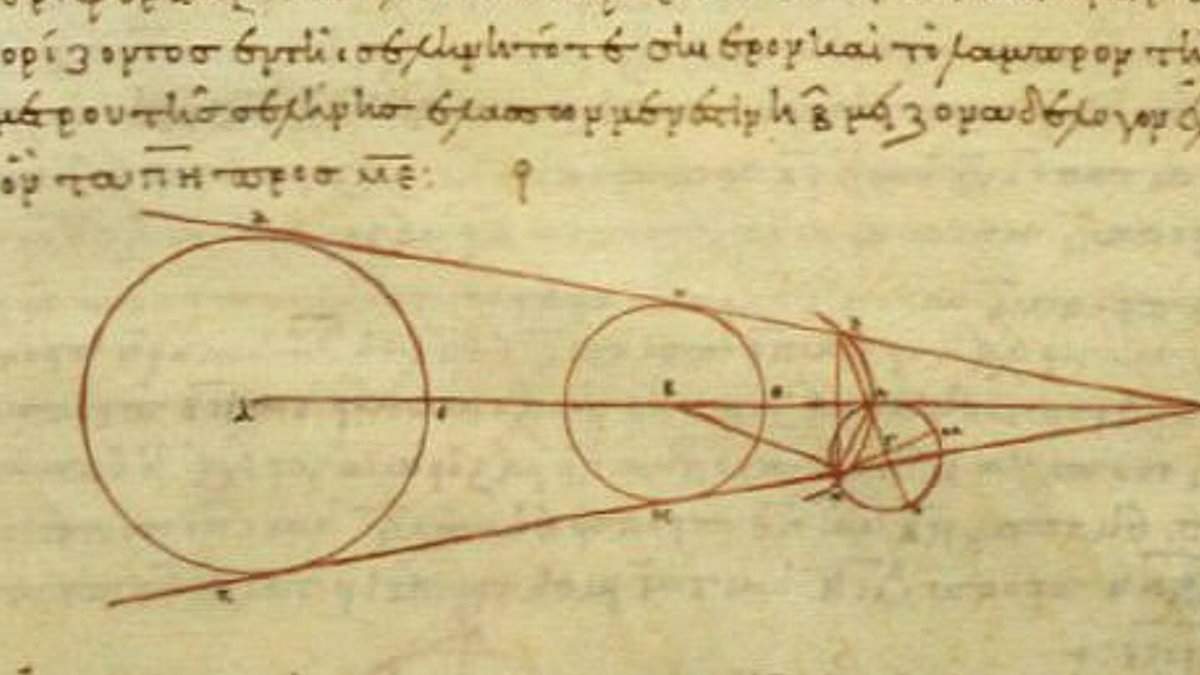Curious about the life and work of Aristarchus of Samos? Look no further! Aristarchus of Samos was an esteemed ancient Greek astronomer, philosopher, and mathematician who lived during the 3rd century BC. One of his most notable achievements was the development of scientific techniques to determine the distances and sizes of the Moon and the Sun. Additionally, he was the first to propose the concept of a heliocentric world system, where the Sun is at the center of the universe. Discover more about this remarkable figure and his contributions in this article.
Biography
What is the story of Aristarchus of Samos? There is limited knowledge about his life, similar to many other astronomers from ancient times. It is recognized that he came into the world on the island of Samos. The specific dates of his existence remain a mystery. In most texts, the timeframe from 310 BC to 230 BC is often mentioned, which is determined by inference.
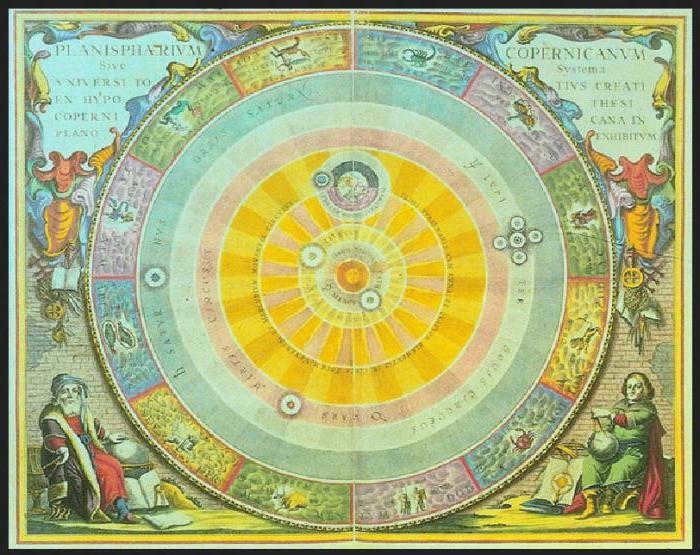
Ptolemy stated that Aristarchus observed the solstice in 280 BC. This statement is the sole authoritative date in the astronomer’s biography. Aristarchus received education from Straton of Lampaskus, a distinguished philosopher representing the Peripatetic school. Historians presume that Aristarchus spent a considerable amount of time working at the Hellenistic scientific hub in Alexandria.
Upon introducing the heliocentric model of the universe, Aristarchus of Samos was charged with atheism. The consequences of this accusation remain unknown.
The structures created by Aristarchus

World order
Aristarchus of Samos had intriguing beliefs about the structure of the universe. When delving into the history of mankind’s understanding of the universe and the Earth’s place within it, one cannot overlook this ancient Greek scientist. Similar to Aristotle, he subscribed to the idea of a spherical universe. However, unlike Aristotle, he did not posit Earth as the center of universal circular motion, but rather the Sun.
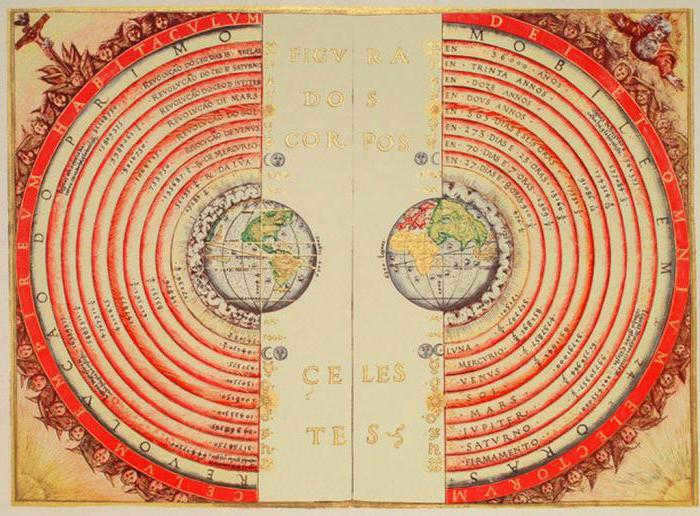
Based on the current understanding of the world, it can be argued that Aristarchus, among the ancient Greek scholars, came closest to accurately depicting the organization of the world. However, his proposed model of the world did not gain popularity within the scientific community of his time.
Heliocentric structure of the world
The heliocentric arrangement of the world, also known as heliocentrism, is the concept that the Sun serves as the central celestial body around which the Earth and other planets orbit. This belief stands in direct contrast to the geocentric arrangement of the world. Heliocentrism has its roots in ancient times, but it gained widespread acceptance during the 16th and 17th centuries.
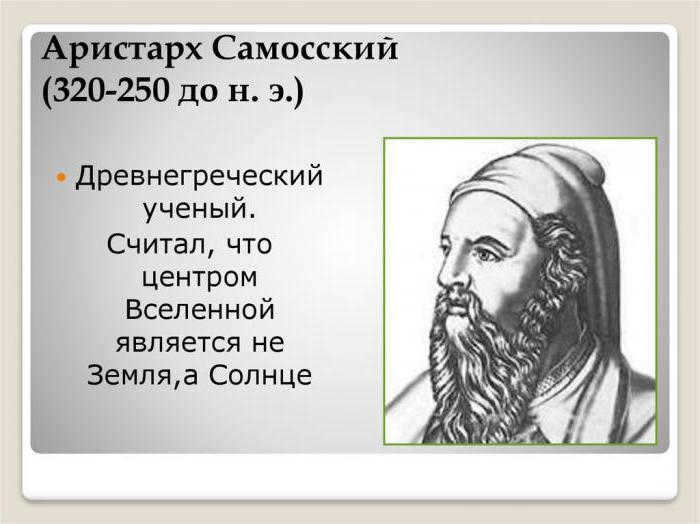
In the model of the heliocentric system, Aristarchus Samosky depicted the Earth as rotating on its own axis, which takes one stellar day, and also orbiting around the Sun, completing one stellar year. This dual movement of the Earth results in the apparent rotation of the celestial sphere and the annual movement of the Sun along the ecliptic among the stars. It is important to note that, relative to the stars, the Sun is considered stationary.
Geocentrism, the belief that Earth is at the center of the universe, was the prevailing theory in Europe, ancient Greece, and other regions for many centuries. However, in the 16th century, the heliocentric model of the world began to gain popularity as evidence in its favor grew. Copernican, Kepler, and Galileo all recognized Aristarchus’ contributions to the development of this heliocentric model.
However, it is important to note that these early judgments were not based on scientific evidence; the measurements of the Moon, Sun, and distances were not calculated through astronomical observations but rather were simply invented. In contrast, Aristarchus of Samosse utilized a scientific approach focused on observation of lunar and solar eclipses, as well as lunar phases.
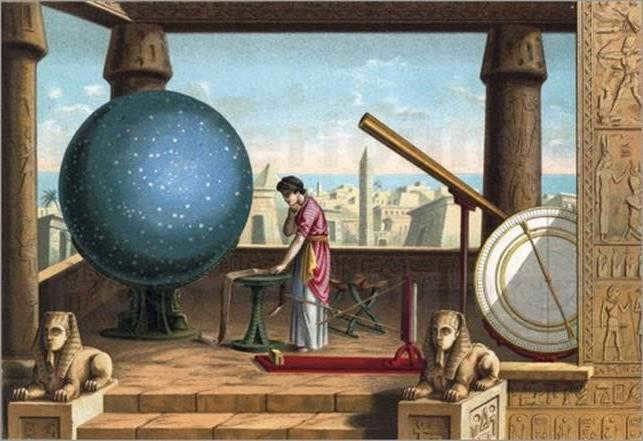
Additionally, Aristarchus of Samos gathered significant information regarding solar eclipses. He astutely recognized that these occurrences take place when the Moon obstructs the Sun from our view. Consequently, he emphasized that the angular measurements of these celestial bodies in the sky are nearly identical. As a result, it can be deduced that the Sun is larger than the Moon by a factor equal to the ratio of their respective distances. According to Aristarchus’ calculations, the ratio of the Moon’s radius to that of the Sun is approximately 20.
Aristarchus attempted to measure the proportions of the Earth, Moon, and Sun. He utilized the study of lunar eclipses for this purpose. He understood that lunar eclipses occur when the Moon enters the Earth’s shadow. Through his analysis, Aristarchus determined that the width of this shadow cone in the Moon’s orbital region is double the size of the Moon. Additionally, he concluded that the ratio between the radii of the Earth and the Sun falls between 43 to 6 and 19 to 3. Furthermore, Aristarchus estimated the radius of the Moon to be approximately one-third the size of the Earth’s radius, a value that closely aligns with the actual measurement (0.273 of the Earth’s radius).
Underestimating the distance to the Sun by approximately 20 times, the scientist’s method was overall flawed and prone to errors. However, given the limitations of antiquity, it was the sole available approach. Interestingly, despite the title of his work, Aristarchus did not actually calculate the distance from the Sun to the Moon, despite having the necessary knowledge of their linear and angular parameters.
Enhancement of the calendar
You are already familiar with the lifespan of Aristarchus of Samos. He was an exceptional individual. Consequently, Aristarchus played a pivotal role in the enhancement of the calendar. Censorinus (a renowned writer from the 3rd century AD) highlighted that Aristarchus determined the duration of the year to be 365 days.
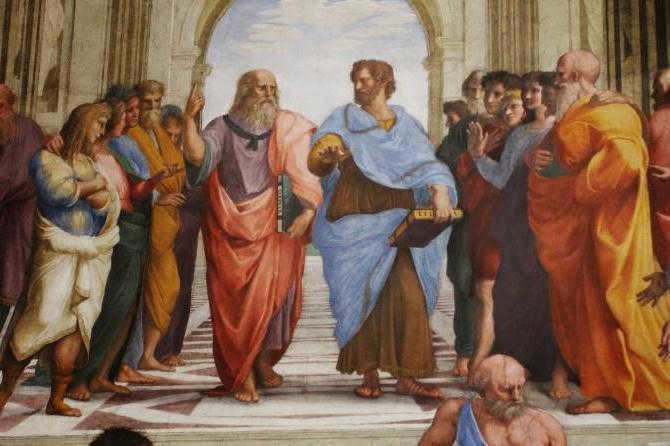
In the records of the Vatican, Aristarchus stands out as the earliest astronomer to introduce two different measurements for the length of a year. These two types of year, known as sideric and tropical, are not equal to each other due to the precession of the earth’s axis. This phenomenon was later discovered by Hipparchus, about 150 years after Aristarchus.
If Rawlins’ interpretation of the Vatican records is accurate, then it can be concluded that Aristarchus was the one to first define the distinction between sideric and tropical years, making him the true pioneer of precession.
Additional accomplishments
Aristarchus is credited as the pioneer of trigonometry. According to Vitruvius, he revolutionized the design of sundial clocks and is also credited with inventing the solar flat clock. Furthermore, Aristarchus made significant contributions to the field of optics. He postulated that the perception of color in objects is a result of light interacting with them, suggesting that paints lack color in the absence of light.
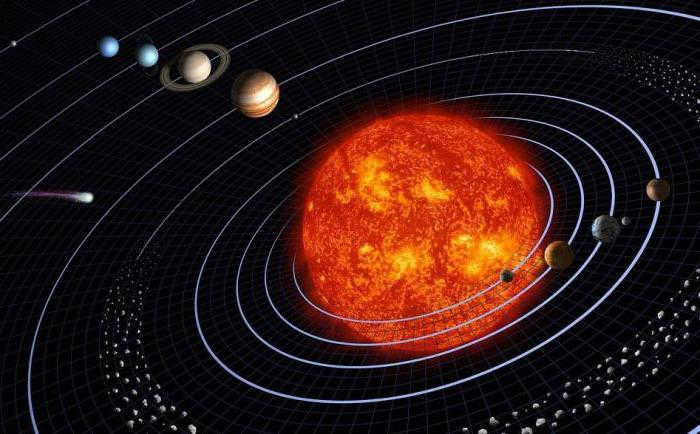
There is a widely held belief that he conducted experiments in order to determine the resolving power of the human eye.
Significance and recollection
In recognition of Aristarchus’ contributions, an asteroid (3999, Aristarchus), a lunar crater, and an air node on his birthplace, the island of Samos, have been named after him.
A Brief Overview of His Biography
He was born in Greece, specifically on the island of Samos, which is situated in the Aegean Sea. During ancient times, it was renowned as the hub of Ionian culture, and it is the birthplace of eminent philosophers such as Pythagoras, Melissus, Epicurus, and the astronomer Aristillus.
The precise details of his birth and death are unknown. Scholars speculate that he lived between approximately 320 and 250 B.C. One significant piece of evidence for his life is Ptolemy’s mention that Aristarchus conducted observations of the solstice in 280 B.C.
Aristarchus initially acquired his knowledge from his teacher, Straton of Lampsacus, who was an ancient Greek philosopher and naturalist. Straton served as the head of the Peripatetic school in Athens.
Ardent interest in astronomy
In his research, he initially endeavors to ascertain the distance between the Earth and both the Sun and the Moon. He strives to compute the dimensions of these celestial bodies utilizing scientific techniques derived from his observations of lunar phases, as well as solar and lunar eclipses. By means of meticulous calculations, he deduces that the distance from our planet to the Sun is approximately 19 times greater than the distance to the Moon. He postulates that, correspondingly, the size of the Sun is 19 times larger than that of the Moon. He also calculates the proportions between these sizes and the size of the Earth.
Aristarchus’ methodologies for determining these sizes were rather imperfect and prone to error. Nevertheless, they were the sole feasible methods available in ancient times. If precise instruments had been in existence during that era, the scholar would have been capable of attaining accurate results.
The importance of his discoveries
The contributions made by Aristarchus of Samos hold immense historical significance in the field of science. He was the first to propose the idea that the planets orbit around the Sun, with the Earth being one of them. Considering the vast size difference between the Sun and the Earth, it is only logical to conclude that the smaller celestial body would revolve around the larger one, rather than the other way around.
Although Aristarchus’ original works have not survived to this day, knowledge about them has been passed down through the writings of other renowned ancient scientists and thinkers. Notably, the ancient Greek historian, philosopher, and moralist Plutarch mentions Aristarchus in his own works.
Further investigations conducted by the scientist
The scope of research conducted by the ancient Greek scientist extended beyond the field of astronomy. He actively participated in the design and advancement of the calendar. A record of Aristarchus’ experiments measuring the duration of a year can be found in one of the ancient Greek manuscripts preserved in the Vatican. Furthermore, Aristarchus delved into the realm of trigonometry, making significant contributions and earning recognition as one of its pioneers.
He made advancements in the field of sundials, explored the principles of optics, and conducted several experiments aimed at determining the limit of the human eye’s resolving power.
Recognition and memory
Ancient Greek scientists and philosophers, who lived during the same time as Aristarchus, acknowledged the immense significance of his works. He was regarded as one of the foremost mathematicians in ancient Greece. His sole surviving work became a required study for aspiring astronomers in ancient Greece.
Archimedes, the greatest scientist of ancient Greece, frequently referenced quotes from Aristarchus’ works.
Among the scientists of that time, Aristarchus of Samos is mentioned more frequently in surviving treatises, solidifying his undeniable contribution to science. Through his observations and mathematical calculations, he provided us with a glimpse of the universe, the Milky Way, and the solar system, placing them in perspective with our humble planet Earth.
A celestial body on the Moon, known as a lunar crater, has been given the name Aristarchus of Samos. On the island of Samos, where he was born, there is an airport that bears his name.
Scientists have always captivated my interest. Initially, it was a naive and childlike fascination. However, I now understand that intelligence is not the only admirable quality possessed by scientists; they also demonstrate courage, patience, and perseverance. The story of Aristarchus of Samos serves as a prime example of this.

The perspectives and experiences of Aristarchus of Samos

Additionally, he established the precise duration of a year and was the first to comprehend the method of calculating the precise distance to the Sun and the Moon, as well as determining the dimensions of these celestial entities. Furthermore, he played a significant role in advancing the field of trigonometry.
Methods employed by ancient astronomers
Ancient astronomer Aristarchus of Samos employed a multifaceted approach in his work:
He meticulously observed cosmic bodies, even without the aid of advanced telescopes. Fascinating, isn’t it?
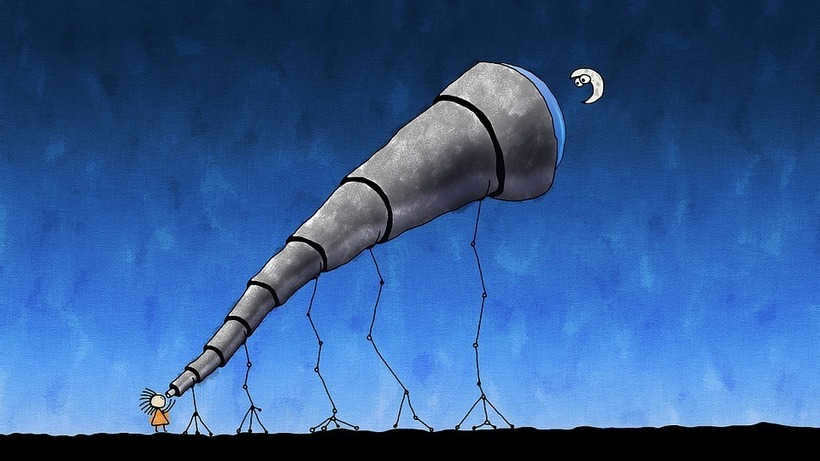
It was through intricate logical, physical, and mathematical computations that we were able to gain further knowledge about the position of stars and planets.
My fascination has always been with thinkers like philosophers, mathematicians, astronomers, and the such. In general, noteworthy individuals excelled in multiple fields. Aristarchus of Samos was one such individual.
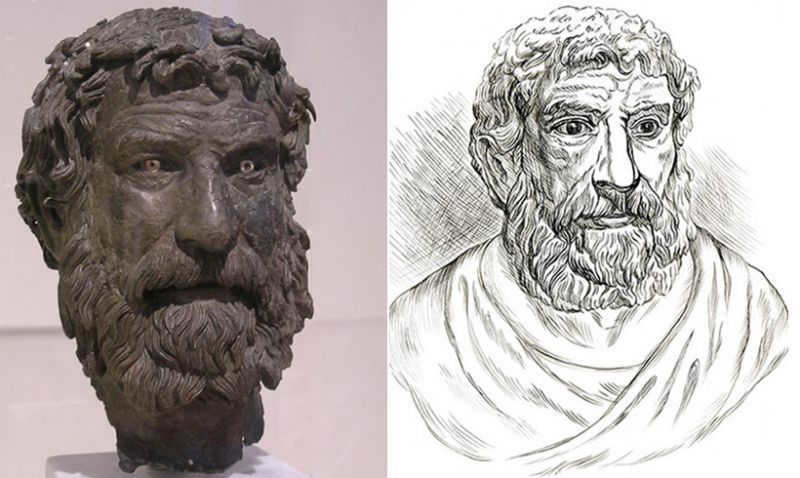
Aristarchus of Samos, the Astronomer
Aristarchus was an astronomer. The exact dates of his life are uncertain, but most sources estimate that he lived between 320 and 250 BC. He was a student of Straton of Lampask, a philosopher from the Peripatetic school. Additionally, there are suggestions that Aristarchus worked at the Hellenistic scientific center in Alexandria.
One of the most noteworthy accomplishments of Aristarchus is often considered to be his proposal of a heliocentric model of the universe, which led to accusations of atheism. This model demonstrated that both the Earth and the Moon orbit around a motionless Sun. It can be regarded as one of humanity’s most significant feats. Initially, people did not grasp the true nature of the solar system and believed that the Earth was flat, supported by three elephants and a tortoise.
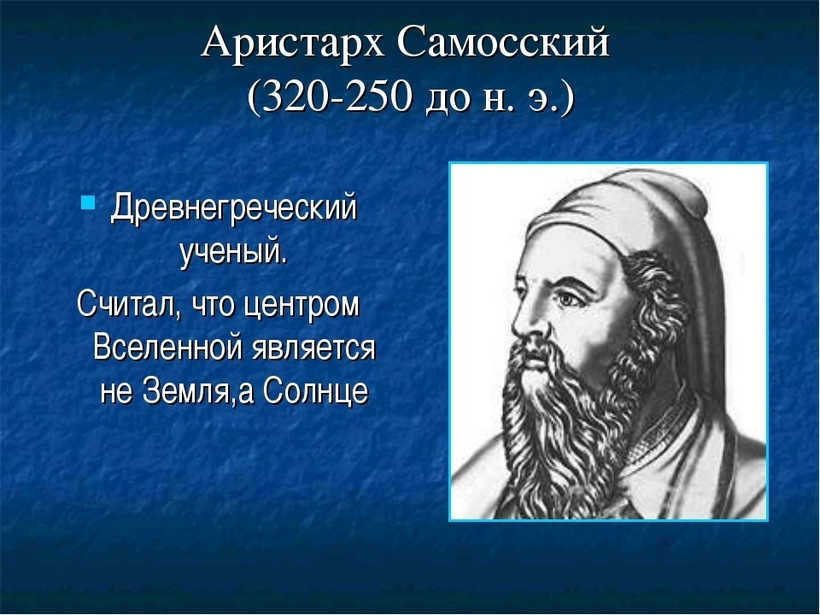
The Perspective of Aristarchus of Samos on the World Order
In alignment with Aristotle, Aristarchus held the belief that the planet possessed a spherical shape. However, in contrast to the ancient Greek philosopher, he placed the Sun at the center of the system instead of the Earth. Unfortunately, people of that time did not comprehend or accept this concept, deeming it to be a misconception. Aristarchus was the first to approach an understanding of the true structure of the solar system.
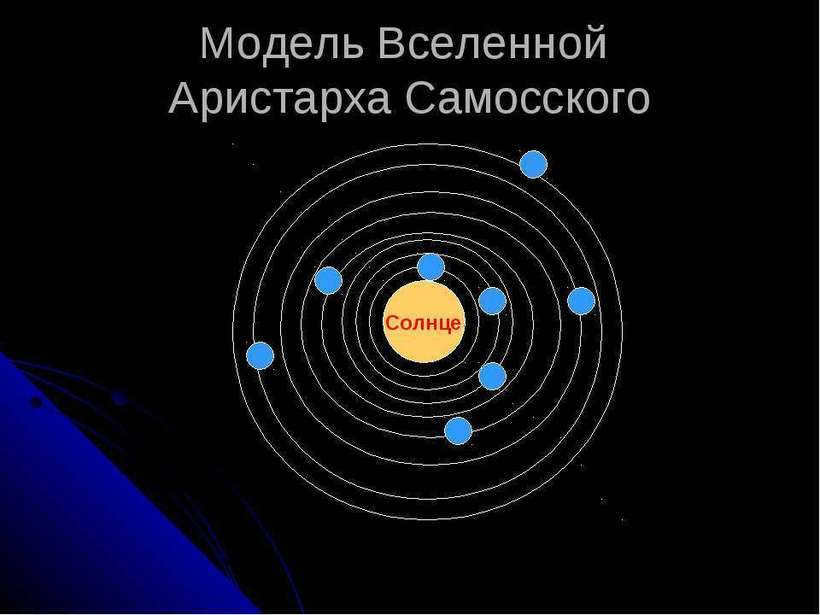
It is worth mentioning his other achievements.
Aristarchus Samosky was a significant figure not just in the advancement of astronomy and mathematics, but also in the broader history of humanity.
It is unfortunate, but for some reason history remembers the names of certain great individuals, while others, who are equally remarkable, are only known by a small group of interested individuals in comparison to the global population. Indeed, the names of Galileo Galilei and Nicolaus Copernicus are now familiar even to young children who may not understand their discoveries, but sadly, most people have never even heard of Aristarchus of Samos. I am incredibly grateful for my higher education, which has allowed me to learn about this exceptional scientist and share a bit about him.
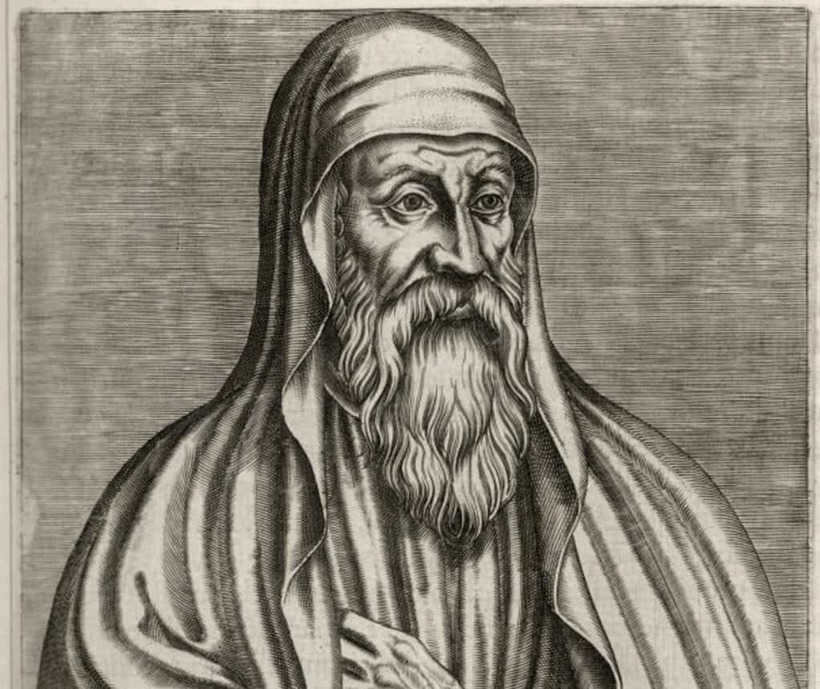
The Scholar Aristarchus of Samos
Aristarchus of Samos, a renowned ancient Greek scholar, spent the majority of his life in the 3rd century BC, with some overlap into the 4th century. He was a contemporary of the equally notable Archimedes.
Aristarchus of Samos made significant contributions to the fields of astronomy, mathematics, and philosophy during his time.
This esteemed scientist was born on the island of Samos (as one might easily guess). Interestingly, Samos is one of the few places that pays tribute to the memory and achievements of this ancient astronomer. The main airport on the island is even named in his honor.
Aristarchus of Samos studied under Straton of Lampsacus, a prominent philosopher of the time.
However, what truly captivates us are the remarkable findings made by Aristarchus of Samos, despite the limited amount of biographical information available about him.
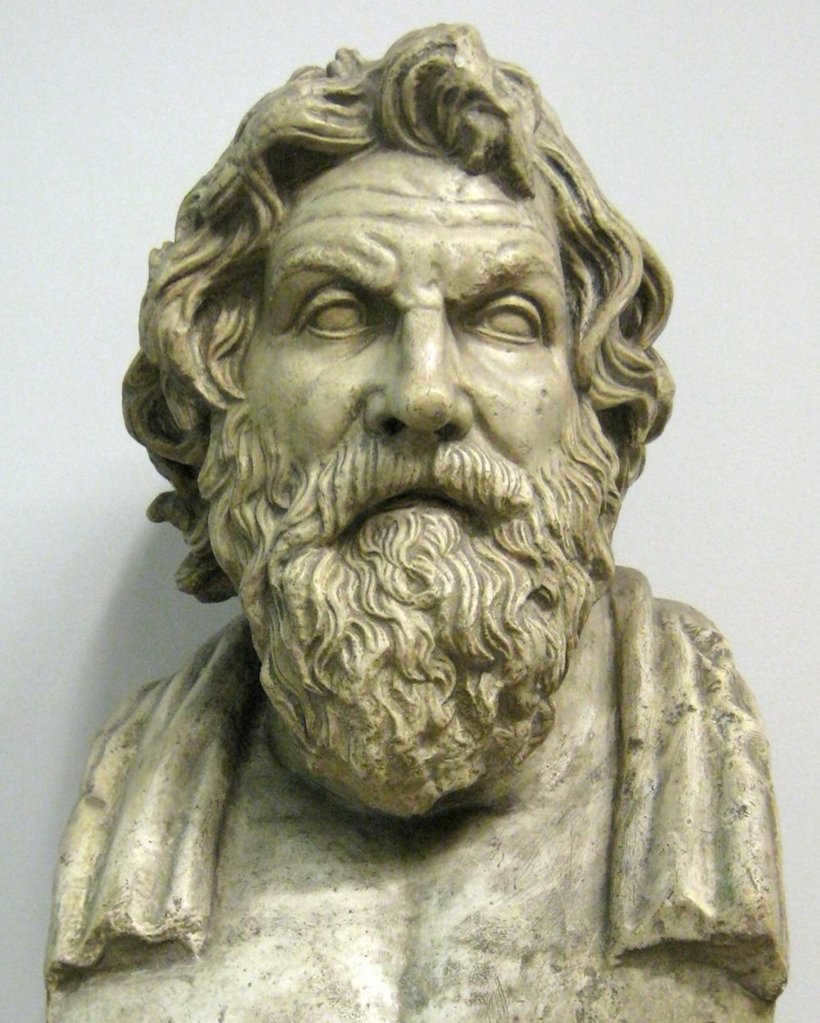
Aristarchus of Samos: A Trailblazer in Science
Aristarchus of Samos was a visionary scientist whose groundbreaking discoveries paved the way for future generations. Many of his findings remained unexplored until centuries later. Let’s explore some of his noteworthy contributions:
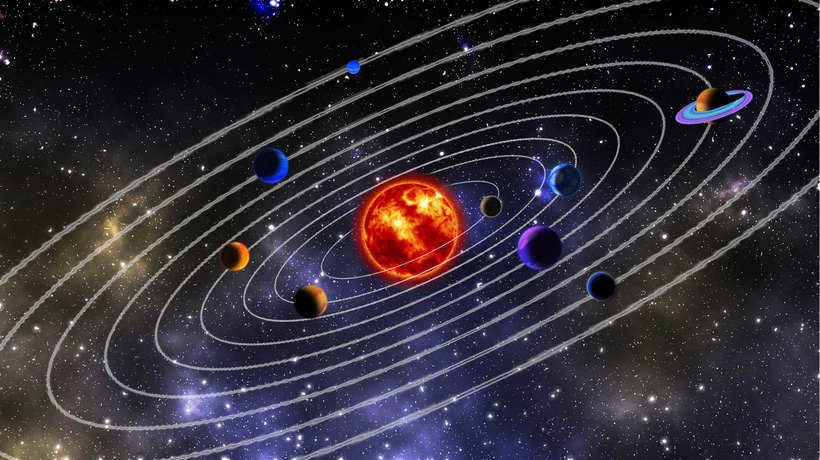
- Aristarchus of Samos made significant contributions to the field of science, including:
- Calculating the size of the Earth and the Sun, as well as the distance between them
- Developing the first heliocentric system of the world
- Refining the calendar
- Laying the foundations of trigonometry
- Perfecting the sundial
Aristarchus of Samos made numerous advancements in the field of science, but his most notable achievement was the creation of the first heliocentric system of the world. He was the first to propose that the Earth revolves around the Sun, as well as around its axis, and even calculated the necessary time intervals for these movements. This revolutionary theory was not fully developed until almost 2 thousand years later and was later revived in the works of Copernicus.
As I delved into the particulars, I was astounded. Oh my! Back in the 3rd century B.C., an individual conceived a model of the universe with the Sun situated at its core, which, even by contemporary standards, represented a monumental leap forward.
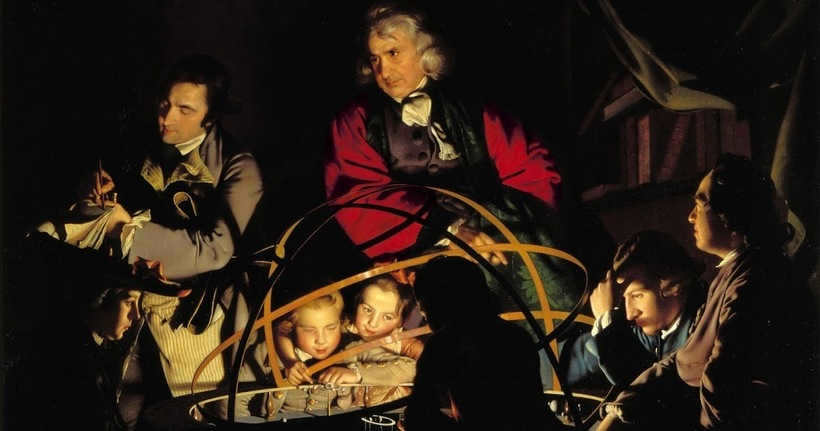
Ancient cosmology and Aristarchus of Samos’ perspectives
It is remarkable that the ancient Greek astronomer came remarkably close to formulating a rather accurate model of the nearby universe. It is also astonishing that his peers unanimously disregarded his concepts.
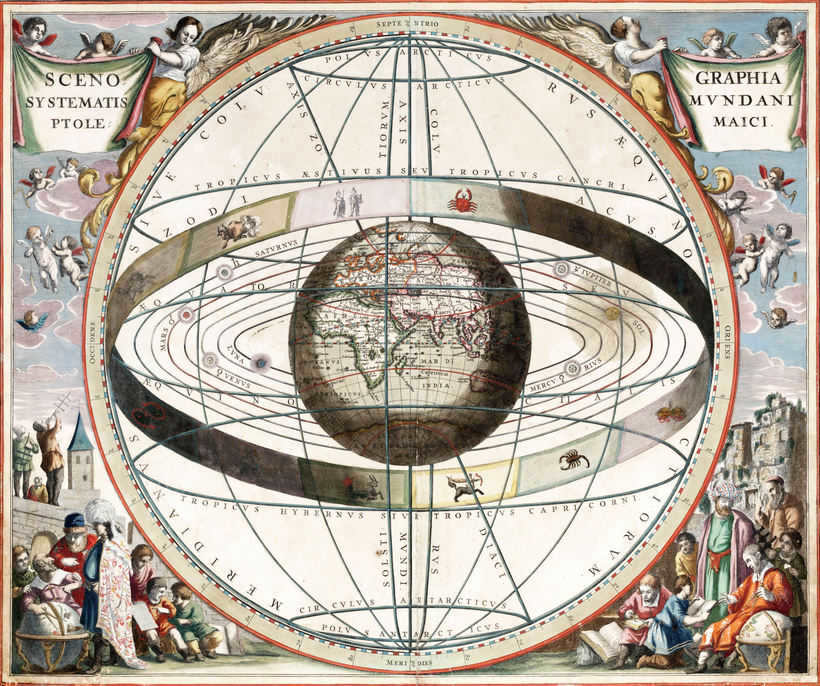
Aristarchus of Samos proposed the first model of the solar system with the Sun at the center.
- The Moon only reflects sunlight;
- The Moon is closer to the Earth than the Sun;
- The Earth, along with other planets, orbits around the Sun;
- The stars are much farther from the Earth than the Sun.
Based on these ideas, Aristarchus attempted to calculate specific cosmic distances, such as the distance from the Earth to the Moon. Although his calculations were imprecise by modern standards, it is important to note that he did not have access to accurate instruments during his time.
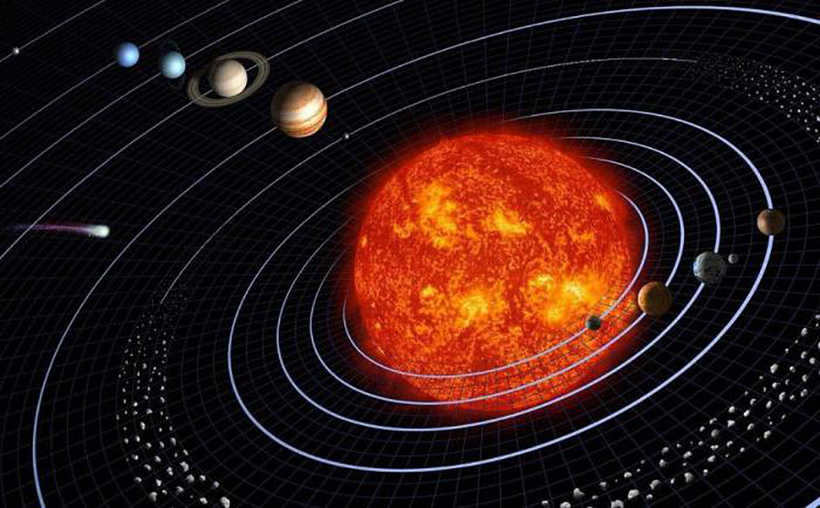
Cosmological perspectives of Aristarchus of Samos and his contemporaries
It is astonishing to me that every single philosophical institution rejected the concept proposed by Aristarchus.
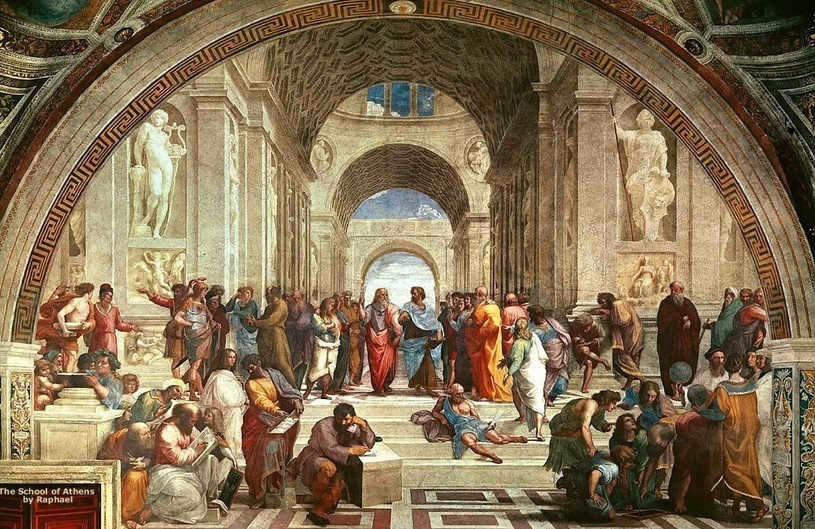
The heliocentric system remained undiscovered until the Modern Age, consequently.
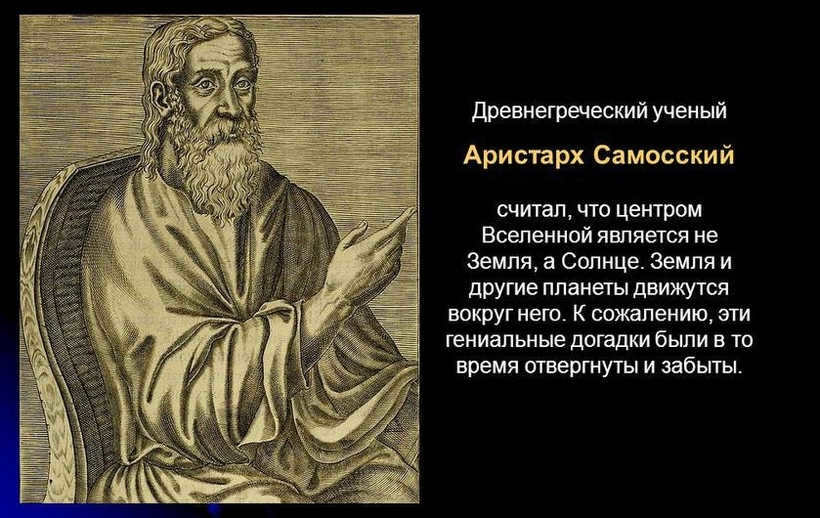
Aristarchus of Samos: A Brief Biography
Regrettably, there exists limited information about the life of Aristarchus of Samos. The precise date of his birth remains unknown, although it is believed that he was born around 315 BC on the island of Samos. According to Ptolemy’s records, Aristarchus observed the solstice in 275 BC, which serves as one of the few accurate dates in the scientist’s biography. He received his education at the school of Straton and spent the majority of his life in Alexandria.
Aristarchus of Samos’ perspective
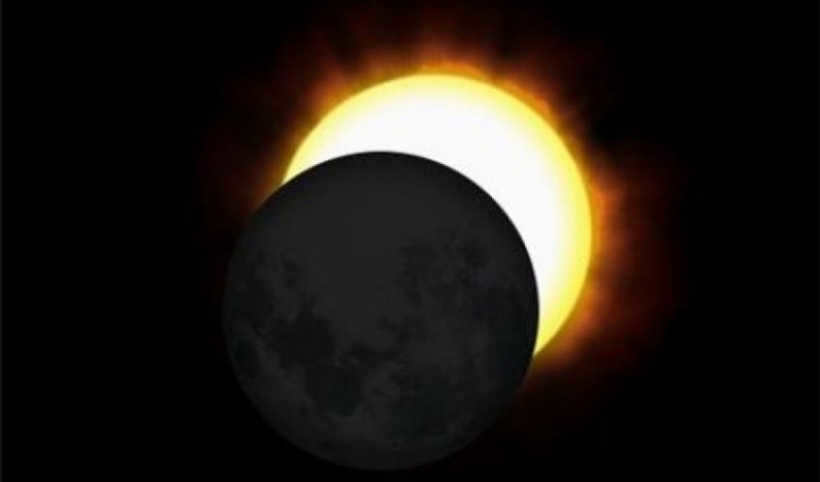
Incidentally, Aristarchus himself is responsible for the concept of a year being 365 days long, as mentioned in the writings of other researchers. Overall, Aristarchus was truly remarkable for his era; in fact, he was the pioneer of trigonometry, and his research laid the groundwork for future explorations of the cosmos.

1 The heliocentric system of the world, where the Sun is at the center and all the planets orbit around it, was first proposed by him.
2 He made scientific calculations to determine the distances between the Sun and the Moon.
3 He made improvements to the calendar and sundial.
4 He played a significant role in the development of trigonometry.

Did you know these fascinating facts about pandas?
Discover some intriguing information about pandas.

Could you please fill in the blanks?
The great mathematician Pythagoras suggested that the earth was formed in a certain shape. What shape do you think it is?
Please complete the following sentence:
The great mathematician Pythagoras suggested that the earth has a shape that is
similar to what geometric shape?
Aristarchus of Samos thought that the center of the universe is located
where?

Is there anything fascinating about Australia?
Is there anything intriguing about Australia?

What is the fascinating information about asteroids?
Discover captivating facts about asteroids.

Are you able to discover numerous fascinating details about volcanoes?
Can you uncover a plethora of captivating information about volcanoes?

Did you know these fascinating soil facts?

What did Aristarchus of overseas think was the center of the universe?
Aristarchus of overseas believed that the center of the universe is located in.

What was the belief of Aristarchus of Samos about the center of the universe?
Aristarchus of Samos believed that the center of the universe is.
What is the concept of the universe?
What were the perceptions of the universe by ancient civilizations?
What are some intriguing perspectives put forth by Aristarchus of Samos?

Can you create an engaging geography report?
Please write a captivating report on geography.
Include some intriguing facts about a person or a subject.
) Thank you in advance) Kindly ensure that it is compelling.

The city of New Delhi is located in the south-east direction from Zhezkazgan, while it is in the north direction from Washington and Ottawa. Additionally, New Delhi is situated in the west direction from Algeria and Tehran.

To find the geographical longitude of Krasnoyarsk and Yakutsk, we have the following values: Krasnoyarsk – 92° and Yakutsk – 129°. The difference between these two longitudes is 129 – 92 = 37°. To convert this difference to hours, we multiply it by 4, which gives us 148. Dividing 148 by 60, we get 2.4 hours, which is equal to 2 hours and 24 minutes.
Since Krasnoyarsk is located to the west, we need to subtract 2 hours and 24 minutes from 00:00. Doing the subtraction, we get 21:36.
The South S. C. is one of the Earth’s significant latitudes, specifically situated 66°33’44” to the south of the equator. The region below the South Arctic Circle is recognized as the Antarctic, while the southern temperate zone lies north of it.

The physical map includes information about the terrain, climate, and crustal structure, as well as the various ethnic groups that inhabit the area.

The physical map includes information about the peoples, climate, relief, and crustal structure.


The constant changes in the political map of the world are a testament to its dynamic nature. This can be attributed to the inherent instability of the political map itself. Throughout history, new countries and states have emerged, contributing to this ever-evolving landscape. Additionally, existing countries may undergo territorial changes or even cease to exist altogether. These shifts in political boundaries are influenced by a variety of factors, including historical events, conflicts, and geopolitical considerations. As a result, the political map of the world is in a constant state of flux, reflecting the complex and ever-changing nature of global politics.

According to the United Nations and other international organizations like the IMF and the World Bank, a developed nation is characterized by a high GDP per capita, a high Human Development Index (HDI), a mature civil society, a stable financial system, and a well-functioning economy….

Search for information online.

One possible approach is to address the root causes of why people flee from war, hunger, poverty, and other hardships. Although it is a challenging task, it is essential to improve the overall situation in the country. For instance, the country currently faces a significant problem with high infant mortality rates, indicating a dire need for improvements in their healthcare system…
© 2000-2022. When using any materials, proper attribution is required. 16+
The site complies with the reCAPTCHA technology, which is subject to Google’s Privacy Policy and Terms of Use.
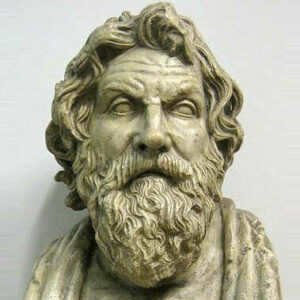
Aristarchus of Samos (c. 310 BC – c. 230 BC) was a renowned ancient Greek astronomer, mathematician, and philosopher. He is remembered for being the first to propose the idea that the Earth is spherical and revolves around the Sun. Aristarchus of Samos, whose life serves as an inspiring example of dedication to science, is credited with establishing the heliocentric model of the universe, a daring hypothesis at the time. Knowledge of Aristarchus’ discoveries can be highly beneficial for high school students.
Early life
There is very little reliable information available about the early years of Aristarchus. What is known is that this esteemed ancient scientist was born on the island of Samos, presumably around 310 BC. It is likely that he was older than another renowned ancient scientist, Archimedes, who later referred to Aristarchus as the greatest intellect of ancient Greece.
It is believed that Aristarchus of Samos was a student of the renowned physicist and philosopher Straton, who belonged to the Peripatetic school. During his youth, Aristarchus spent a significant amount of time in Alexandria, the center of Hellenism, where he pursued his studies in the sciences.
Heliocentric system
Out of all the numerous scientific works authored by Aristarchus, the only surviving work called “On the magnitudes and distances of the Sun and the Moon” sheds light on his groundbreaking calculations. This ancient Greek scientist became the first to attempt to determine the size of these celestial bodies and the distance separating them. Prior to his work, astronomers merely speculated without any scientific evidence to support their assumptions.
Aristarchus dedicated extensive time to observing lunar phases and eclipses, including solar eclipses. Based on these observations, he concluded that the Moon had a spherical shape and derived its light from the Sun. Through intricate calculations, Aristarchus was able to establish the ratios between the sizes of the Sun, Moon, and Earth.
Aristarchus relied on a method that, although imprecise, was the sole option available during ancient times.
Samosky made a significant contribution to science by asserting that the Sun, due to its immense size, could not orbit the diminutive Earth. His book proposed the idea that a star is a stationary celestial body around which other celestial bodies, including Earth, revolve. This laid the groundwork for the heliocentric model of the world, which was ultimately confirmed by Nicolaus Copernicus nearly 18 centuries later.
The sundial and calendar
Aristarchus of Samosia made significant contributions to the field of astronomy, but he also dedicated his efforts to improving sundials. Through his work, he achieved remarkable success in this area.
Aristarchus’ calculations allowed for the determination of the length of the year. According to his findings, the year consisted of 365+(1/4)+(1/1623) days.
Aristarchus of Samosia, being a versatile and talented scientist, was also one of the pioneers of trigonometry, a new mathematical discipline during his time.
The Final Years of Aristarchus Samosky
Throughout his lifetime, Aristarchus Samosky faced condemnation due to his daring scientific hypotheses. In short, he was accused of showing disrespect towards the Creator and was considered a traitor, unworthy of respect. However, the true extent of the danger these accusations posed to the courageous scientist remains unknown.
The exact date of Aristarchus of Samos’ death remains uncertain, but it is believed that he passed away around 230 B.C. The ancient Greek scientist made significant contributions to the field of science and is honored by having one of the moon’s craters and an asteroid named after him.
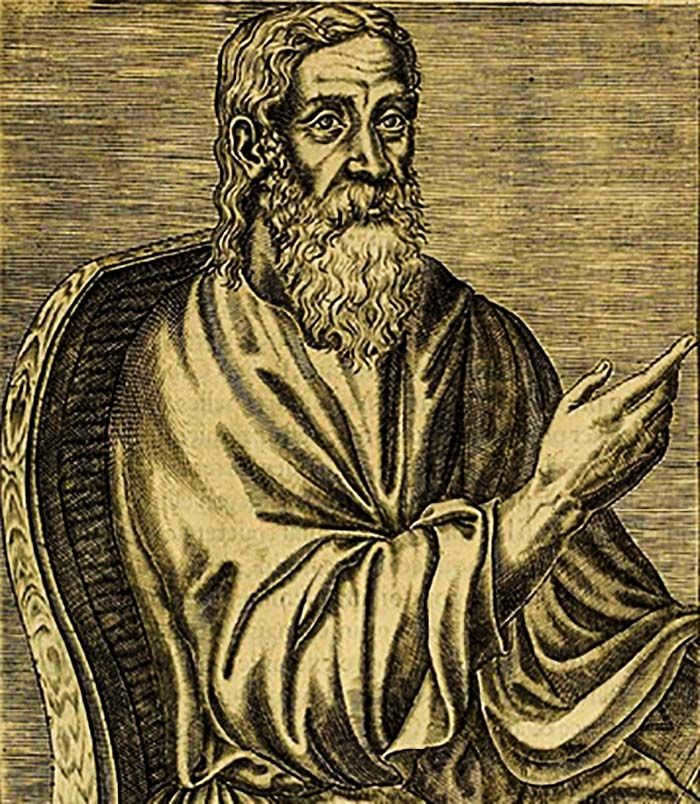
Aristarchus of Samos (310 – 230 BC) was a prominent mathematician, philosopher, and astronomer in ancient Greece. He was one of the first to propose that the Earth is round and orbits around the Sun. Despite facing religious persecution during his time, Aristarchus fearlessly expressed his hypotheses, earning recognition from his peers as the greatest intellect of Hellas. Even today, the astronomical community holds him in high regard as one of the most significant scientists of antiquity.
The exact date of birth of Aristarchus of Samos is not known for certain, nor is much known about his life in general. He was believed to have been born around 310 BC on the island of Samos and was likely older than Archimedes, who later referred to Aristarchus as the greatest intellect of ancient Greece. It is speculated that Aristarchus of Samos may have been a pupil of the renowned philosopher and physicist Straton, who was active during that time period in either Athens or Alexandria, where he played a role in the establishment of the local museum.
Initial steps in the field of science
Out of the numerous historical records about the Greek philosopher, only one has managed to survive till present times, and it pertains to the characteristics of the Sun and the Moon. For the first time in the history of mankind, the scientist attempted to determine the actual size of the star and Earth’s satellite, as well as the distances between these celestial bodies. Previously, various philosophers had put forward their assumptions on these matters, but none of them provided any scientific evidence. Aristarchus, on the other hand, took a different approach. He conducted calculations based on real astronomical observations of lunar phases and eclipses, including solar eclipses, and concluded that the Moon is a spherical object that relies on sunlight. Therefore, Samosky determined the position of our planet in relation to the Sun and the Moon.
Positioning of celestial entities
Thanks to the data collected, the astronomer was able to determine that the distance between the Sun and Earth is approximately 20 times greater than the distance between the Earth and the Moon. Additionally, the size of the Sun is about 20 times larger than the Moon, in proportion to their respective distances. Through the analysis of eclipses, Samosky also discovered that the radius of the Moon is roughly three times smaller than the radius of the Earth. Based on these findings, the approximate ratio of the Sun’s size to the Earth’s size is nineteen to three.
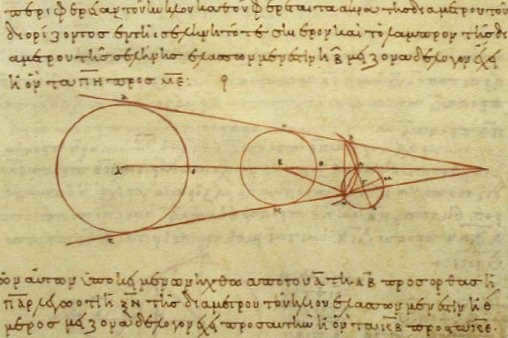

Samosky conducted calculations on the Earth’s satellite’s radius
Subsequent scientists discovered that the distance to the Sun is actually much greater than the values Aristarchus had obtained. Although his methods were flawed, Aristarchus made a significant contribution to the understanding of not just the solar system but also the entire universe.
The heliocentric model of the universe
Upon analyzing information pertaining to celestial entities, Samosky came to the realization that the Sun, due to its vast dimensions, could not possibly orbit the diminutive Earth as was previously believed. In a publication, he put forth a hypothesis suggesting that the star remained stationary while all other celestial bodies, including Earth, orbited around it. This marked the inception of the heliocentric theory, which did not gain acceptance in ancient times and was only validated by Nicolaus Copernicus nearly 18 centuries later.
Samosky made a substantial impact not just on the investigation of the solar system, but also on the evolution of the calendar. As a result of his calculations, the duration of the year became defined as 365 days and the duration of the month as 30 days. Additionally, the researcher dedicated his efforts to enhancing the sundial and is credited as the creator of trigonometry.
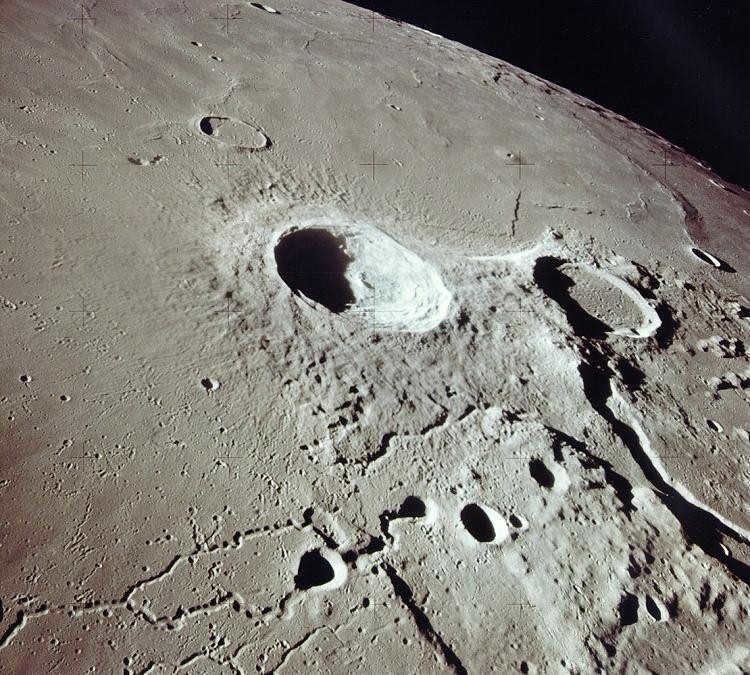

Aristarchus Samosky, a renowned scientist, has been immortalized with a lunar crater named in his honor. His groundbreaking discoveries and publications earned him great recognition, but also led to accusations of renouncing God and betraying the Creator. In those times, such acts were severely punished, although it remains unknown if any action was taken against Aristarchus. The exact date of his death is also shrouded in mystery, but it is believed that he passed away around 230 B.C. at the age of approximately 80. Even after more than a century, the contributions of this Greek philosopher to science remain invaluable. To commemorate his legacy, an asteroid, one of the craters on the moon, and even the airport in his homeland of Samos have been named after him.
Enjoyed this article? Share it with your friends!
Aristarchus of Samos (c.310 – c.230 BC) was a renowned mathematician and astronomer from Ionia in ancient Greece. Aristarchus proposed a groundbreaking idea in astronomy, suggesting that the Sun, rather than the Earth, was the immovable focal point of the universe and that all the planets orbited around it. Additionally, he postulated that the stars were distant, stationary suns and that the cosmos was vastly larger than previously believed.
The concept of a sun-centered universe is commonly known as the “heliocentric” model. While this term adequately describes Aristarchus’ beliefs, it fails to acknowledge the broader implications of his hypothesis. In addition to positing a sun-centered planetary system and a rotating Earth, Aristarchus’ ideas had other interesting consequences. It is worth noting that Heraclides of Pontus had already proposed a rotating Earth prior to Aristarchus, and the Pythagorean tradition held that the Earth revolved around an imaginary body called the “Central Fire,” which they believed to be the ultimate source of light in the universe.
The development of Greek mathematics was greatly influenced by the Egyptian civilization, just as the Babylonian civilization had a significant impact on Greek astronomy. Alexander the Great’s exploration of the Orient facilitated the exchange of ideas between different cultures, and this exchange played a crucial role in shaping Greek astronomical theories. It was within this cultural context that Aristarchus formulated his groundbreaking theory.
With the exception of a few rare cases, the prevailing belief among Greek astronomers during the time of Aristarchus was that the Earth was the center of the universe. In the 4th century BC, both Plato and Aristotle defended the geocentric model, but their arguments were largely based on mystical and mythical reasoning. According to this model, the stars and planets orbited around the Earth on spheres arranged in concentric patterns. Plato even described the universe as a Spindle of Necessity, accompanied by the Sirens and rotated by the three Fates. Plato’s perspective left little room for the concept of a universe governed by natural laws, as he rejected any form of determinism. In fact, Plato saw the unpredictable movements of certain planets, particularly Mars, as evidence that the laws of nature could not explain all the changes in the universe. Eudoxus, a student of Plato, challenged his teacher’s beliefs by developing a more mathematically based model that was free from myths, but the notion of concentric spheres and circular planetary motion continued to persist.
Despite the widespread agreement on the Earth-centered model, there were various factors that prompted some to question its complete accuracy and necessitate some adjustments. For instance, the geocentric model failed to account for both the fluctuations in planetary brightness and their retrograde motion. In light of these limitations, the Aristarchus hypothesis emerged as an alternative elucidation for the deficiencies in Earth-centered models.
The evolution of Aristarchus’ theory
Aristarchus’ sole surviving piece of writing is titled On the Dimensions and Distances of the Sun and Moon, and it does not contain any indication of a heliocentric model. In fact, he adheres to a geocentric perspective. There are several potential explanations for this. It is conceivable that for the purposes of his work, the acceptance of either theory is irrelevant, and so Aristarchus made the decision not to present a view that contradicts the prevailing consensus. Another possibility is that he may have developed the heliocentric view after completing this work. Some historians, such as Sir Thomas Heath, who have extensively studied the topic, believe the latter to be true. In this treatise, Aristarchus reaches the conclusion that the Sun must be much larger than the Earth through meticulous geometric analysis based on the Earth’s shadow on the Moon during a lunar eclipse. It is conceivable that his groundbreaking ideas were motivated by the notion that smaller objects should revolve around larger ones, rather than the opposite. Additionally, Aristarchus harbored suspicions that the stars we observe in the night sky are actually distant suns.
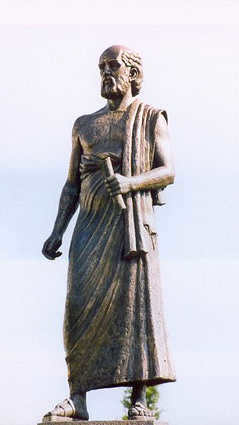
Regrettably, the writings of Aristarchus, which showcase the heliocentric model, have been misplaced. However, his ideas regarding the cosmos have been reconstructed from subsequent sources and allusions. Notably, Archimedes makes a significant mention of Aristarchus’ theories in his renowned work, The Sand Counter.
The term “universe” is commonly used by astronomers to refer to a sphere with the Earth at its center and a radius equal to the distance between the Sun and the Earth. However, Aristarchus of Samosus proposed a different perspective in his book, suggesting that the universe is actually much larger than what is conventionally believed. According to his hypotheses, the fixed stars and the Sun remain stationary, while the Earth orbits around the Sun in a circular path, with the Sun positioned in the middle of the orbit. Additionally, Aristarchus posited that the sphere of fixed stars, which is located at the same center as the Sun, is so vast that the circle in which the Earth revolves has a proportional relationship to the distance from the fixed stars, similar to the relationship between the center and surface of a sphere.
(1-2)
The dismissal of Aristarchus’ perspective
According to some historians, it is suggested that Aristarchus himself may have abandoned his theory because he was unable to reconcile it with the assumed circular movements of the celestial bodies, which all Greek astronomers considered as a given. It is not completely clear whether Aristarchus himself gave up on his own hypothesis. What does seem clear is that Hipparchus of Nicaea, most likely the greatest astronomical genius of antiquity among Greek astronomers, concluded that the geocentric model provided a better explanation for the observations than Aristarchus’ model. The only way Aristarchus’ viewpoint could withstand mathematical analysis was by assuming an elliptical orbit of the Earth, and this assumption was considered almost sacrilegious in Greek science. Additionally, this new model expanded the size of the universe far beyond the accepted size, which was also difficult to accept.

